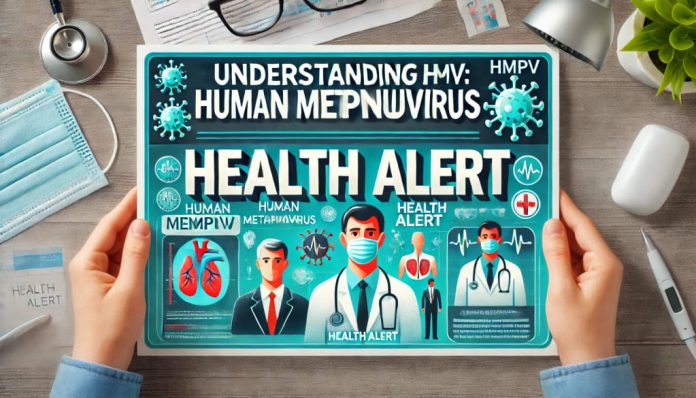In 2025, health experts are raising alarms about the increasing impact of Human Metapneumovirus (HMPV) on public health in the United States. Although HMPV has been recognized for years, its rising prevalence and growing impact have brought it into sharper focus.
This guide provides an overview of HMPV, including its symptoms, prevention strategies, and how it’s influencing communities nationwide. Let’s explore why this virus is a significant health concern and what steps you can take to stay protected.
What is HMPV?
Human Metapneumovirus (HMPV) is a respiratory virus from the Paramyxoviridae family, related to influenza and respiratory syncytial virus (RSV). Discovered in 2001, HMPV has been linked to respiratory illnesses, particularly in young children, elderly adults, and individuals with weakened immune systems. It spreads via respiratory droplets when an infected person coughs or sneezes and can persist on surfaces for hours.
While HMPV cases are typically higher in colder months, its increasing frequency and severity are causing concern among healthcare providers.
Symptoms of HMPV Infection
HMPV can cause mild to severe respiratory symptoms. Common signs include:
- Coughing
- Fever
- Nasal congestion
- Shortness of breath
- Wheezing
- Fatigue
- Sore throat
- Body aches
In vulnerable groups, HMPV can lead to severe complications such as bronchiolitis (inflammation of small airways), pneumonia, or even respiratory failure. Hospitals across the U.S. report a rise in admissions related to these complications, particularly among children and older adults.
HMPV’s Impact on Public Health in 2025
Reports from states like California, New York, and Florida indicate a significant rise in HMPV cases, prompting the Centers for Disease Control and Prevention (CDC) to issue new guidelines for monitoring and managing the virus. Key concerns include:
- Increased Transmission: HMPV’s ability to spread quickly in crowded settings, such as schools and nursing homes, poses a substantial risk. The overlap of flu season with HMPV’s peak increases the strain on healthcare facilities.
- Vulnerable Populations: Children under five and adults over 65 face the highest risks. Outbreaks in nursing homes and long-term care facilities have been particularly severe, emphasizing the need for proactive measures.
- Seasonal Outbreaks: Similar to RSV and influenza, HMPV peaks in fall and winter. This seasonal pattern complicates predictions and preparedness efforts for healthcare systems.
Preventing HMPV Infection
Currently, there is no specific vaccine for HMPV. However, the following preventive measures can help reduce the risk of infection:
- Practice Good Hygiene
- Wash your hands frequently with soap and water for at least 20 seconds.
- Use hand sanitizers containing at least 60% alcohol if soap is unavailable.
- Cover Coughs and Sneezes
- Use a tissue or your elbow to cover your mouth and nose, minimizing the spread of respiratory droplets.
- Avoid Close Contact
- Steer clear of individuals showing symptoms of respiratory illness. If you’re sick, self-isolate to protect others.
- Clean Frequently Touched Surfaces
- Disinfect door handles, light switches, cell phones, and other commonly touched items, especially during peak illness seasons.
- Stay Up to Date on Vaccinations
- Although there’s no vaccine for HMPV, ensuring you’re vaccinated against the flu and RSV can help lower the risk of co-infections and complications.
Combating HMPV: What’s Being Done?
Research into HMPV vaccines and treatments is ongoing. Pharmaceutical companies are actively developing antiviral drugs and therapies to target the virus. Public health campaigns aim to increase awareness of HMPV and encourage preventive measures. Health authorities also stress the importance of staying home when sick to curb transmission.
Hospitals and healthcare providers are bolstering their resources to handle seasonal surges. The CDC and other organizations continue to monitor outbreaks and share updated guidelines with medical professionals to ensure effective management.
Conclusion: Stay Informed and Protected
HMPV’s growing prevalence in 2025 highlights the need for vigilance. While most cases are mild, severe complications can occur, especially in high-risk groups. Staying informed, practicing good hygiene, and adhering to public health recommendations can help reduce the spread of this virus.
As we navigate through cold and flu seasons, keeping track of updates from health authorities and taking preventive steps can make a significant difference in safeguarding your health and that of your community.
Call to Action
Stay ahead of HMPV and other respiratory infections by subscribing to reputable health newsletters, following trusted sources, and sharing this information with loved ones to spread awareness.














